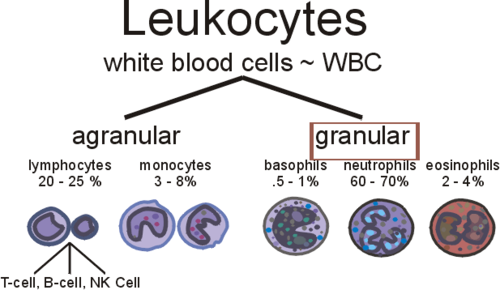chapter 18: the blood
the blood powerpoint
composition
the blood is the medium for transport of substances around the body
composed of
mostly water plasma (54-58%)
red blood cells (41-45%)
everything else (1% white blood cells, platelets, proteins, etc)
formed elements
three types of elements in the blood
erythrocytes (99% of cells)
leukocytes
platelets
the hematocrit is the percentage of total blood occupied by erythrocytes
around 42% in women and 45% in men
plasma is 90% water
plasma
consists of water and other substances
90% water which is a transport medium for all blood borne substances, ions, gases, nutrients, hormones and plasma proteins (10%)
majority of the 10 is plasma proteins (8%)
plasma proteins
establish an osmotic gradient between blood and interstitial fluid (osmotic pressure)
proteins buffer ph changes
aid in transport of blood-borne substances (hormones, etc)
function in immunity as antibodies
fibrinogen is a key factor in blood clotting
plasma proteins
albumin
complement
fibronectin
inorganic salts
glycocalyx
erythrocytes = oxygen transport
rbc also transports co2 and hydrogen ions
diameter of an erythrocyte is about 8um
cell lacks a nucleus, organelles and ribosomes
does not go through mitotic division because no nucleus
mainly a package of hemoglobin molecules and iron
flat, biconcave, disc scape is well suited to carry out its main function to carry oxygen
plasma membrane of the erythrocyte is flexible, allows it to slide through a capillary
hemoglobin
consists of 2 parts
globin is 4 folded polypeptide chains
the heme (iron) part is non protein, each of the 4 iron atoms is bound to one of the polypeptides and can combine with one molecule of oxygen gas
hemoglobin can also combine with co2, hydrogen ions, carbon monoxide and nitric oxide
hemoglobin can buffer ph by binding to hydrogen ions
rbc
bone marrow produces erythrocytes
erythropoiesis (erythrocyte production) is the production of new red blood cells, replacing the worn out cells in circulation
average lifespan of a rbc is 120 days
do not reproduce
number of rbc normally remains constant
erythropoiesis
controlled by erythropoietin
if oxygen delivery to tissues is decreased, kidneys detect this and increase output of erythropoietin and erythropoiesis increases
erythropoietin can be produced synthetically in the lab
homeostatic imbalance
anemia - lower than normal oxygen carrying capacity of the blood
types of anemia
nutritional anemia - low iron
pernicious anemia - b12 deficiency
aplastic anemia - failure of bone marrow to make enough rbc
renal anemia - kidney disease
hemorragic anemia - loss of blood
hemolytic anemia- rupture of rbc
sickle cell disease
polycythemia
excess in circulating erythrocytes
produces an elevated hematocrit
primary is caused by tumorlike condition in the bone marrow
secondary is an erythropoietin-induced adaptive mechanism to improve oxygen carrying capacity in the blood
leukocytes
one of the other main constituents of the blood is the wbc
form one of the body’s major means of defense against foreign invasion
agranular
lymphocytes
monocytes
granular
basophils (b shape)
neutrophils (3+)
eosinophils (2 facing)

platelets
last components of the blood
allow blood to clot to prevent uncontrolled bleeding
hemostasis
function of platelets
also called thrombocytes
function in hemostasis
remain functional for around 10 days
hormone thrombopoietin increases the number of platelets
platelets are cell fragments derived from undifferentiated blood cells from the bone marrow
overall production is not well known
hemostasis
prevents blood loss from damaged blood vessels
2 steps to stop blood escape
vascular spasm then platelet plugging
then once it stops it forms a blood clot